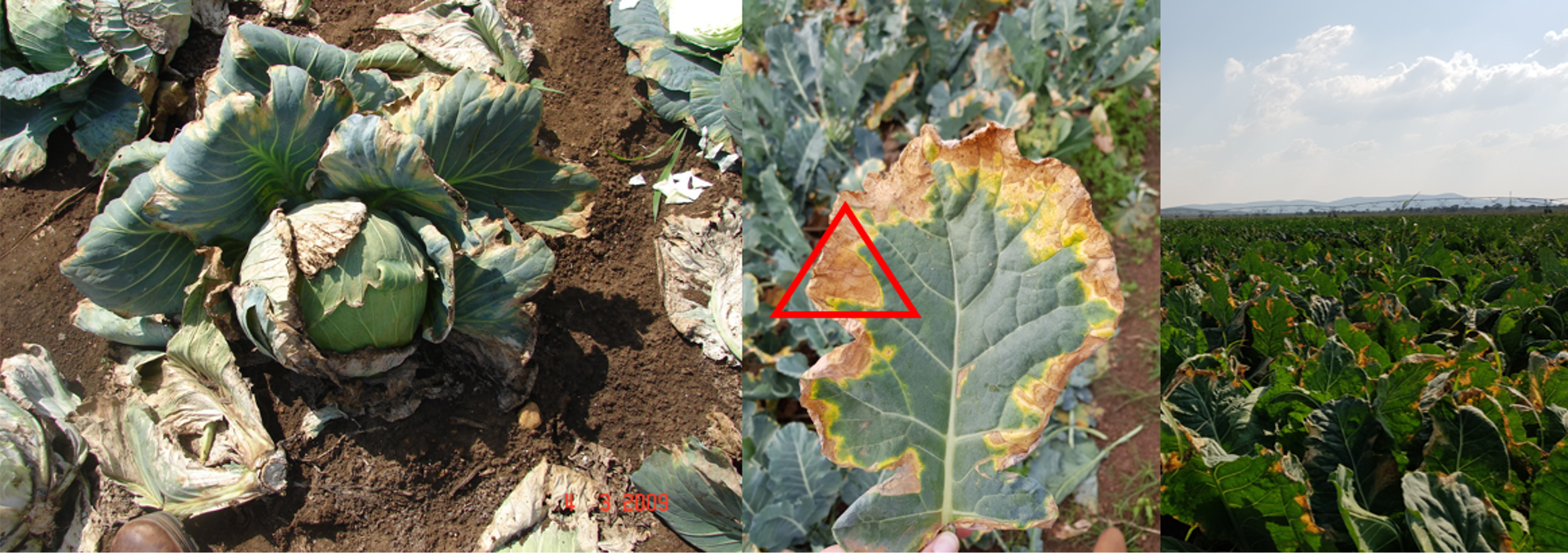Hydathodes (or pores) on the margin of these cabbage leafs exude plant sap or guttation droplets early in the morning. These hydathodes are the most common entry method for Xanthomonas campestris pv. campstris
- Black rot, caused by the bacterium Xanthomonas campestris pv. campestris (Xcc), is a significant disease of cabbage and other crucifer crops worldwide.
- The pathogen thrives in warm, wet weather.
- The bacterium can infest seed, infecting young seedlings as they emerge.
- The pathogen can also survive in cruciferous weeds, such as yellow rocket, Shepherd’s purse, and wild mustard, as well as in crop debris in the field.
- Spread from plant to plant takes place in the following ways:
- splashing water,
- wind blown water droplets
- workers or animals moving from infected fields to healthy fields.
- Symptoms of black rot generally begin with yellowing at the leaf margin, which expands into the characteristic “V”-shaped lesion.
- The bacterium commonly enters the plant through the hydathode, or water pore, on the margin of the leaf; however, damage to leaves due to insect feeding, hail, or mechanical injury can also enable pathogen entry.
- The bacterial infection becomes systemic, meaning that the bacterium can enter the veins of the plant and spread into the cabbage head, which can lead to serious losses in storage. Blackening of the vascular tissue is typical in severe infections.

Guttation
- Plants are extremely dependent on the balance of water and nutrients in the plant. One way that plants can balance the amount of water they take in is by a process called guttation.
- Guttation is when water is secreted from the tips of the leaves of plants. Guttation happens in certain plants that have vascular systems. It usually only takes place in smaller plants (not trees).
- Guttation happens at night when the soil is very moist and the roots absorb water. If there is too much water, root pressure causes the water to squeeze out of the plant and onto the tips of the leaves or the blades of the plant.
- Guttation takes place through the hydothodes, not through the stomata of the plant

Blackrot – Management Strategies
- Copper-based products are known to be effective in reducing spread from infected to healthy plants.
- Anything that can be done to reduce leaf wetness and water splash will help reduce disease spread. This includes:
- Watering plants in the morning so that leaves dry prior to sunset (not sleeping with wet feet),
- Maintaining your irrigation system to reduce the likelihood of waterlogging,
- Increasing spacing between plants,
- Orienting rows with prevailing winds to maximize air flow and drying.

